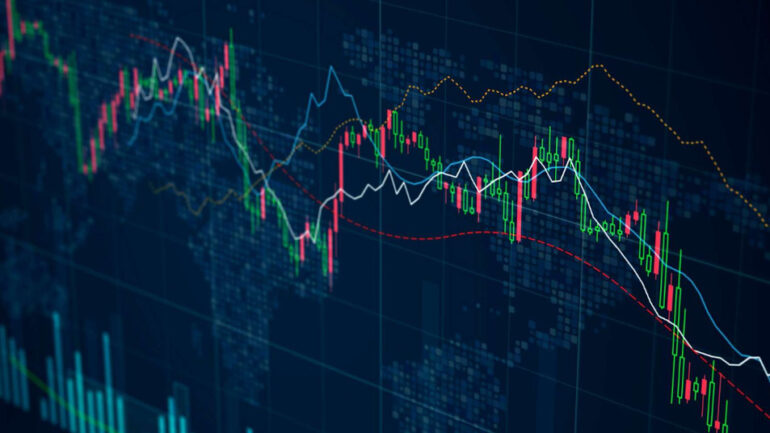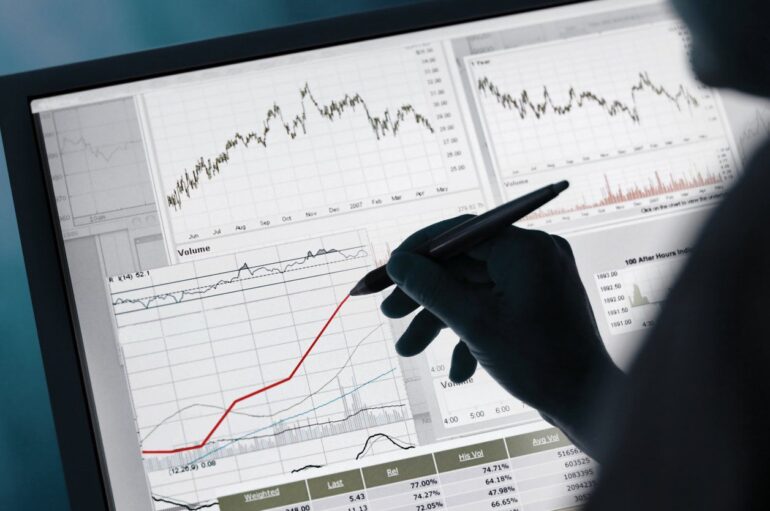Forex is a great way to diversify your investment portfolio and make money from the potential fluctuations in currency prices. In this guide, we will introduce you to some of the basics of foreign exchange markets and discuss the top things you should know before getting started.
1. Forex explained
Foreign exchange markets are a 24-hour, global network of economic activities for trading national currencies. The financial market is the largest in the world, with an average daily turnover of $5.1 trillion USD. It facilitates international trade and investment by allowing citizens to convert between different currencies (foreign exchange or forex).
In foreign exchange markets, currency pairs are traded between investors who wish to make speculative gains off of fluctuations in their relative prices. For example, an investor may buy EUR/USD (euro-U.S. dollar pair) if they believe that the euro’s value will increase in comparison to the U.S. dollar. If the Euro does indeed rise, then this investor will make a profit from his or her predicted speculation about the currency’s strength. Remessa Online offers a more detailed review of the market.
2. Types of Foreign Exchange Markets

In order to understand how the forex market works, it is important to be familiar with the three types of foreign exchange markets: spot, forward, and derivatives.
Spot Market
The spot market is a physical or virtual marketplace that allows for the simultaneous purchase and sale of a currency pair on demand at current prices with terms of delivery instantaneously or within two business days. This type of market holds immense liquidity and enables traders to take advantage of short-term fluctuations in currency prices instantly.
Forward Market
The forward market uses agreements between traders to purchase or sell a specific amount of currency at a predetermined price at the time specified in the future. Transactions occur over-the-counter between parties and are not characteristic of spot transactions; however, like spots, they hold secure contracts that guarantee their settlement at their agreed-upon terms which will remain valid for dates ranging anywhere from one day up until 1 year into the future according to agreed upon specifications.
Derivatives Market
The derivatives market consists mainly of futures contracts; these are forward contract transactions that take place through an organized trading platform such as Nymex (New York Mercantile Exchange). The traditional form of derivatives exists as long-term contractual agreements between two parties who agree on the delivery date and prices based on past price movements with protection against any unfavorable shifts occurring in the exchange rates prior to their expiration date.
3. Analyzing Economic Data
The vast majority of data used in fundamental analysis comes from economic indicators. Economic indicators are statistics that measure current economic trends and that can be used to forecast future developments in a national or global economy. They are frequently released by government agencies and private organizations and cover topics such as Exchange rate levels, GDP (Gross Domestic Product), Employment, CPI (Consumer Price Index), Capacity Utilization, Inflation, Interest Rates, Retail Sales Volumes, and Consumer Sentiment.
Using economic data to make FX forecasts is known as Fundamental Analysis. It’s a way of attempting to predict future movements in exchange rates by analyzing current economic conditions. By examining key elements such as the health of an economy, money supply levels, and government policies that influence the strength or weakness of a currency you can make better trading decisions.
4. Understanding Interest Rates

Interest rates are important factors when it comes to foreign exchange market movements due to their influence on currency values. Generally, a higher interest rate leads to an appreciation of a currency, while a lower interest rate will lead to depreciation.
Decisions are taken by Central Banks representing governments in order to regulate their countries’ economies as part of monetary policy. Interest rates set by central banks can have a large impact on investor sentiment and trading behavior in the foreign exchange markets. In most cases, higher interest rates lead to but do not necessarily cause an appreciation in its currency’s exchange rate. Similarly, lower interest rates can lead to but not necessarily cause a depreciation of the currency’s exchange rate over the long term.
5. Analyzing Political Events
Economic news releases such as GDP, employment numbers, trade data, and inflation rates are all reports you can use to analyze economic performance and the health of the underlying currency. Investors pay close attention to these events to figure out how they will affect exchange rates and their profits.
Political risk is another factor that can influence a currency’s value—whether it’s a change in government policies or a downturn in economic performance due to civil unrest or other geopolitical forces. In some cases, trading restrictions might be imposed in certain countries or regions because of geopolitical tensions. Investors should be aware of these risks before they enter the market so they can analyze how they might adversely affect their strategies.
6. Trading Strategies

Depending on the type of trader you are, there are different strategies that will work better for you. Consider these strategies to get a good start in the foreign exchange markets.
Trend Following
Trend following is an investment strategy that involves taking advantage of long-term movements in the foreign exchange markets. The premise behind this approach is to buy units when prices are rising and sell them when prices are falling. This form of trading attempts to capture gains from long-term moves, typically by entering and exiting positions as part of a broader portfolio strategy.
In general, trend-following strategies rely on identifying areas of strong price movement, or “trends”, in the foreign exchange markets. When a trend is identified, traders will then use data such as average daily prices or technical indicators to make decisions about when to enter and exit positions within the identified trend.
Momentum Trading
Momentum trading is a short-term trading strategy relying on quick trades based on the strength of price momentum. Momentum traders look for volatility in the market to make quick profits. The logic is short-term price movements are easier to predict than longer-term movements, thus providing an opportunity for a fast trade.
Momentum trades use technical indicators such as MACD or Stochastics that measure the speed and magnitude of each move in order to identify when a currency pair is more likely to continue in its current direction. These indicators also provide an indication of when traders should exit the position, as potentially damaging events such as sudden news or price volatility are likely to harm the position.
Scalping
The primary objective of scalping is to make small profits over a large number of trades which can eventually add up to significant gains. Scalpers attempt to take advantage of brief imbalances in the market, usually by taking only a few pips spread, with the underlying objective being to quickly move out of any one position with minimal losses or gain profits.
It’s important to note that most professional traders prefer scalping as a short-term strategy and not as a long-term one due to its high transaction costs and high-risk exposure associated with it. Scalpers must also act quickly and make decisions in an instant as there are limited opportunities available that allow them to identify suitable entry and exit points in quick succession.

Conclusion
The foreign exchange market is a complex and extremely fast-paced environment. It’s important for anyone aspiring to become a successful trader to understand the nuances of the currency markets before diving in. Moreover, learning how to manage emotions while trading can have an outsized impact on performance—learning effective ways to manage stress can help traders maintain discipline while helping them keep a longer-term perspective on their investments. Finally, having realistic expectations when entering into any new market is essential—understanding that losses are inevitable in order to achieve optimal gains will help aspiring traders temper their expectations accordingly.
